| Date | Text | |
|---|---|---|
30 Nov 1936

Jay Laurence Lush |
Jay Laurence Lush (biology) Jay Laurence Lush publishes the influential textbook Animal Breeding Plans in the United States. |
|
30 Nov 1936

Carlo Perrier |
Carlo Perrier (chemistry) Carlo Perrier and Emilio Segrè at the University of Palermo confirm discovery of the chemical element which will become known as Technetium. |
|
30 Nov 1936

opioid |
opioid (chemistry) The opioid Methadone is synthesized in Germany by scientists working at Hoechst AG. |
|
30 Nov 1936

Claude Shannon |
Claude Shannon (computer science) Claude Shannon's Master's thesis at MIT demonstrates that electronic application of Boolean algebra could construct and resolve any logical numerical relationship. |
|
30 Nov 1936

Konrad Zuse |
Konrad Zuse (computer science) Konrad Zuse submits patents in Germany based on his Z1 computer design anticipating von Neumann architecture. |
|
30 Nov 1936

British Graham Land Expedition |
British Graham Land Expedition (exploration) British Graham Land Expedition (1934–1937) concludes its work, having determined that Graham Land is an integral part of the Antarctic Peninsula and not an independent archipelago. |
|
30 Nov 1936

Bruno de Finetti |
Bruno de Finetti (mathematics) Bruno de Finetti publishes "La Prévision: ses lois logiques, ses sources subjectives" in Annales de l'Institut Henri Poincaré, his most influential treatment of his theorem on exchangeable sequences of random variables. |
|
30 Nov 1936
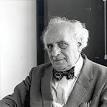
Hans Freudenthal |
Hans Freudenthal (mathematics) Hans Freudenthal proves the Freudenthal suspension theorem in homotopy. |
|
30 Nov 1936

Amarro Fiamberti |
Amarro Fiamberti (medicine) Italian psychiatrist Amarro Fiamberti is the first to document a transorbital approach to the brain, which becomes the basis for the controversial medical procedure of transorbital lobotomy. |
|
30 Nov 1936

United Kingdom |
United Kingdom (medicine) Publication in the United Kingdom of Dr A. J. Cronin's novel The Citadel, promoting the cause of socialised medicine. |
|
30 Nov 1936

Eugene Wigner |
Eugene Wigner (physics) Eugene Wigner introduces the term isospin. |
|
30 Nov 1936

Alec Reeves |
Alec Reeves (technology) Alec Reeves invents pulse-code modulation. |
|
30 Nov 1936
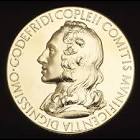
Copley Medal |
Copley Medal (awards) Copley Medal – Henry Dale |
|
30 Nov 1936
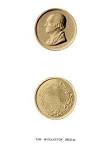
Wollaston Medal for geology |
Wollaston Medal for geology (awards) Wollaston Medal for geology – Waldemar Lindgren |
|
28 Jan 1937

Arthur Pollen |
death Arthur Pollen Arthur Pollen (born 1866), English inventor. |
|
29 Jan 1937

Aleen Cust |
death Aleen Cust Aleen Cust (born 1868), Irish veterinary surgeon. |
|
13 Mar 1937

Elihu Thomson |
death Elihu Thomson Died 13 Mar 1937 at age 83 (born 29 Mar 1853). English-American engineer and inventor whose discoveries in the field of alternating current phenomena led to the development of successful alternating current motors. Thomson invented electric welding and other important inventions in electric lighting and power among his lifetime total of about 700 patents. Thomson was also a cofounder of the General Electric Company (in 1892, in a merger with the Edison Company) industry. |
|
31 Mar 1937
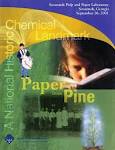
Pine-pulp newspaper |
Pine-pulp newspaper In 1937, the first U.S. newspaper to be printed in colour on pine-pulp paper was the Dallas News. |
|
12 Apr 1937

Frank Whittle |
Frank Whittle (technology) Frank Whittle ground-tests the first jet engine designed to power an aircraft, at Rugby, England. |
|
03 May 1937
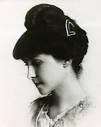
Esther Boise Van Deman |
death Esther Boise Van Deman Died 3 May 1937 at age 74 (born 1 Oct 1862). American archaeologist who was studying on a scholarship in Rome when she decided that Roman archaeology was to be her chosen field of work. In 1907, while attending a lecture in the Atrium Vestae, that she noticed that the bricks blocking up a doorway were different from those in the structure itself, and she speculated that those differences in building materials might provide a wealth of information for dating the choronology of Roman structures. Thus began thirty years of life in Rome. She was the first woman to specialize in Roman field archaeology. She established lasting criteria for the dating of ancient constructions, which advanced the serious study of Roman architecture. |
|
09 May 1937

Alison Jolly |
birth Alison Jolly Alison Jolly (died 2014), American primatologist. |
|
28 May 1937
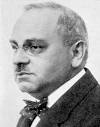
Alfred Adler |
death Alfred Adler Alfred Adler (born 1870), Austrian psychotherapist. |
|
05 Jun 1937

Alan Blumlein |
Alan Blumlein (technology) Alan Blumlein is granted a patent for an ultra-linear amplifier. |
|
08 Jun 1937

solar eclipse |
solar eclipse (astronomy) First total solar eclipse to exceed 7 minutes of totality in over 800 years; visible in the Pacific and Peru. |
|
11 Jun 1937

David Mumford |
birth David Mumford David Mumford, American mathematician. |
|
11 Jun 1937

R. J. Mitchell |
death R. J. Mitchell R. J. Mitchell (born 1895), English aeronautical engineer. |
|
22 Jun 1937
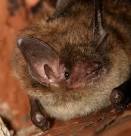
Little brown bat |
Little brown bat In 1937, a certain female little brown bat in Mashpee, Mass., was banded by researchers. The same bat was found two decades later, on 30 Apr 1960, in a cave on Mt. Aeolis, Vermont. It was identified from the band as 24 years old - the oldest known U.S. bat. The little brown bat (Myotis lucifugus) has a wing span of 222-269 mm with glossy fur on its back and paler underside colours ranging from pale tan to dark brown. The species is the most abundant bat in the U.S., found throughout forests of North America and Alaska, in tree or cliff cavities, caves, mines and attics. On 25 Aug 1999, a newspaper reported a 33-yr-old wild bat in Switzerland. On 20 Jun 2005, a journal received an article identifying a 41-yr-old bat in Siberia. |
|
03 Jul 1937

Jacob Schick |
death Jacob Schick Died 3 Jul 1937 at age 59 (born 16 Sep 1877). American inventor and manufacturer of the first successful electric dry razor. He started in the razor business in 1925 to design and manufacture his invention of the Magazine Repeating Razor. By 1926, he was selling clips of blades that could be loaded into a safety razor without touching the blade to avoid cuts during handling. While this product was successful, he turned his attention to developing a dry razor. By 1927 he had designed a dry razor with a reciprocating head powered by a flexible drive shaft to an external motor. Although he marketed this model from 1929, it was not until 1931 that he had improved the idea as a new one-handed electric shaver with self-contained motor that sales took off. He lived only six year after that.. |
|
13 Jul 1937
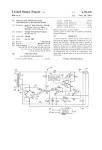
Water softener patent |
Water softener patent In 1937, a patent was issued to Leroy C. Lind for the Servisoft water softener (U.S. No. 2,087,157). The invention used a regeneratable granulated mineral, such as zeolite, which was already in use by domestic water softening systems using a permanent bed of the material. Leroy Lind devised a method that would be easier and faster to maintain. It would be less costly, and enabled the spent mineral to be regenerated collectively from a number of installations at a central location. The softener was packaged in water pervious, flexible walled cartridges or sacks sized to stack several vertically within a tall cylindrical tank connected to the water supply line. The contents of the sacks would settle to seal against the interior surface of the tank. The tank had a removable top to facilitate switching with renewed sacks. |
|
13 Jul 1937

Henry Edward Armstrong |
death Henry Edward Armstrong Died 13 Jul 1937 at age 89 (born 6 May 1848). English organic chemist whose major research in substitution reactions of naphthalene was important to the synthetic-dye industry. In early work, he developed a method for sanitary surveys of water supplies by determining the organic impurities (sewage) content, which helped to control typhoid fever. Later, Armstrong also pioneered in organic crystallography, and the understanding of the chemical composition of camphor and related terpene compounds. He also devised a centric formula for benzene. Armstrong challenged Arrhenius's ionic theory, proposing instead that water is a complex saturated with the gas “hydrone.” He maintained that vapor pressure was a measure of the concentration of free hydrone molecules. |
|
18 Jul 1937

Roald Hoffmann |
birth Roald Hoffmann Born 18 Jul 1937. Polish-born American chemist, corecipient, with Fukui Kenichi of Japan, of the Nobel Prize for Chemistry in 1981 for their independent investigations of the mechanisms of chemical reactions. His work aims at theoretically anticipating the course of chemical reactions. It is based on quantum mechanics (the theory whose starting point is that the smallest building blocks of matter may be regarded both as particles and as waves), which attempts to explain how atoms behave. Orbital interaction and symmetry relations between molecules or parts of molecules are fundamental to this theory of conservation of orbital symmetry in chemical reactions. |
|
19 Jul 1937
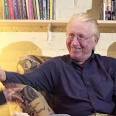
Bibb Latané |
birth Bibb Latané Bibb Latané, American social psychologist. |
|
20 Jul 1937
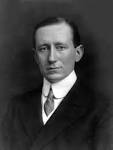
Guglielmo Marconi |
death Guglielmo Marconi Guglielmo Marconi (born 1874), Italian inventor. |
|
27 Sep 1937
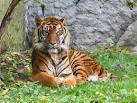
Bali tiger |
Bali tiger (biology) Last Bali tiger dies. |
|
16 Oct 1937
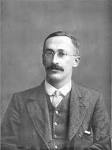
William Sealy Gosset |
death William Sealy Gosset William Sealy Gosset (born 1876), English statistician. |
|
23 Nov 1937

Jagadish Chandra Bose |
death Jagadish Chandra Bose Jagadish Chandra Bose (born 1858), Bengali physicist. |